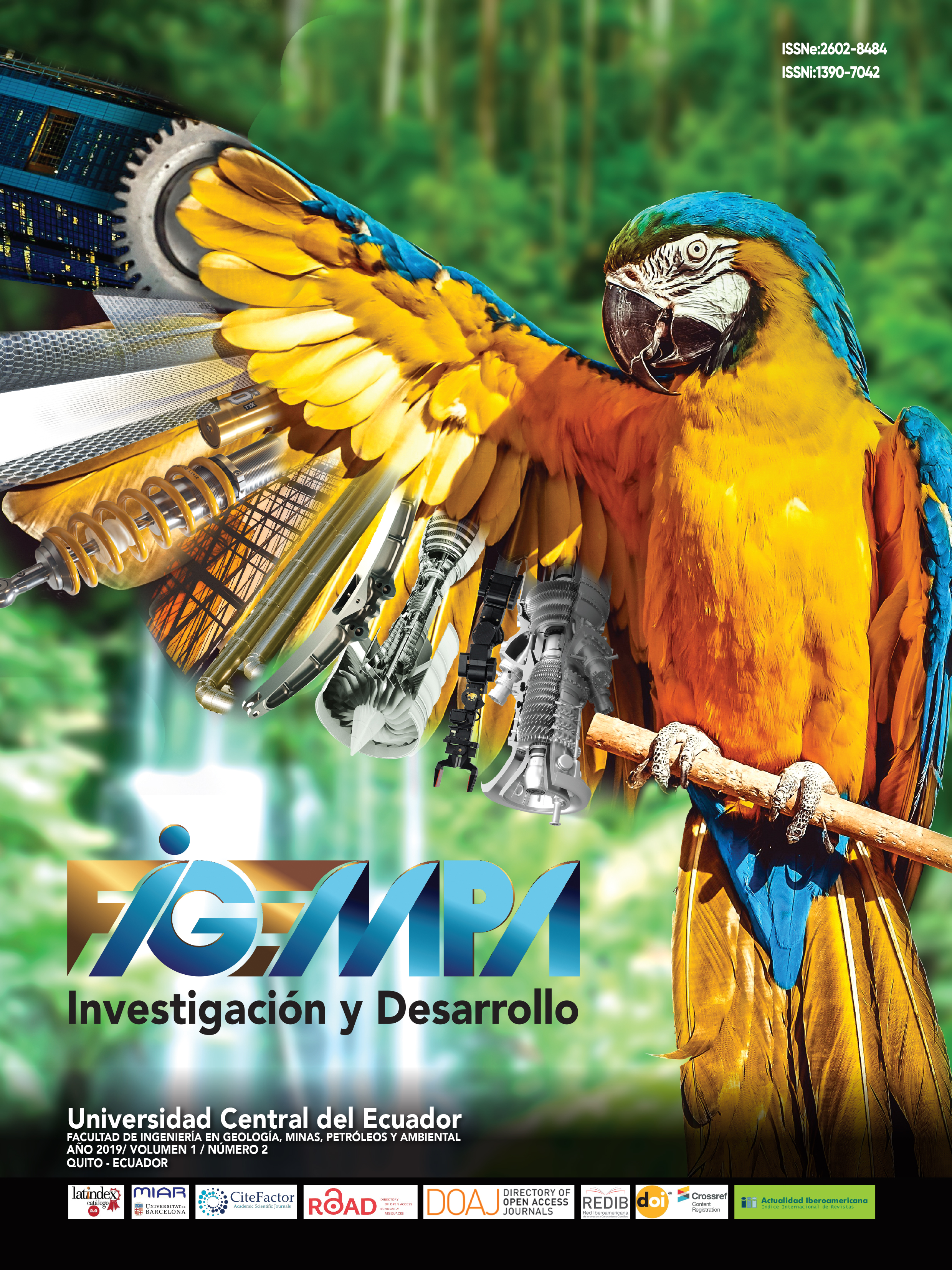Application of biodegradable non-corrosive acid technology for cleaning oil wells in the eastern basin
Main Article Content
Abstract
This article demonstrates the effectiveness in the application of new non-corrosive biodegradable acid technology for oil well cleaning. To this end, laboratory tests were carried out on metal coupons with carbonate inlays comparing with conventional acid. From the results obtained it was evidenced that the non-corrosive biodegradable obtained greater elimination of carbonates and less metal corrosion than the other one. Afterwards, a field test is shown on a piece of equipment with corrosion and carbonates, leaving it to soak for a period of 24 hours. As a result, an integral cleaning of the equipment was observed. Additionally, compatibility test was carried out with crude oil from the eastern basin of Ecuador, observing excellent phase separation, good interfacial tension, and little or no adsorption on the walls of the test bottle. Finally, it is shown the results of a production history of a well where the conventional acid treatment was changed for the non-corrosive biodegradable acid. The production history shows that with conventional acid a production drop of 150 bpd was obtained while with the non-corrosive biodegradable product the production drop was 80 bpd. Within the conclusions the use of non-corrosive biodegradable acid eliminates the incrustations present in the oil wells without causing corrosion in the mechanical equipment and its biodegradable property facilitates the operation in the field.
Downloads
Metrics
Article Details

This work is licensed under a Creative Commons Attribution 4.0 International License.
References
Apex Engineering Products Corporation. (2018) Struvite Removal with RYDLYME. http://www.apexengineeringproducts.com/struvite-removal/
Chicago Spectro Service Laboratory Inc. (2014) Recuperado de http://www.chicagospectro.com
Corrales, E. (2013) Aplicación de nuevas tecnologías para optimizar la producción en el campo Palanda-Yuca Sur. [Tesis de pregrado] Universidad Central del Ecuador, FIGEMPA, Carrera de Ingeniería de Petróleos, Ecuador.
Cruz, D. (2015) Análisis técnico de la implementación de estimulación matricial con unidad de coiled tubing para optimizar la producción del pozo PLAN-050H de la arena Hollín en la amazonía ecuatoriana. [Tesis de pregrado] Universidad Tecnológica Equinoccial, Facultad de Ciencias de la Ingeniería, Carrera de Ingeniería de Petróleos, Ecuador. Departamento de Petróleos, Energía y Contaminación. Facultad de Química. Universidad Central del Ecuador.
Departamento de Petróleos, Energía y Contaminación. (2019) Facultad de Química. Universidad Central del Ecuador.
ENVIRO-TEST Inc. (2018). http://www.envirotestinc.com
Gonzales, J. (2014) Daño a la formación en pozos petroleros. [Tesis de pregrado] Universidad Nacional Autónoma de México. Facultad de Ingeniería, México.
INTERMIPETROL. (2015) RYDLYME in Ecuador (Oil Wells). http://www.intermipetrol.com/#xl_xr_page_productos%20biodegradables
Leines, J. (2015) Optimización de la producción utilizando una técnica de fracturamiento alternativa en un pozo de un campo maduro de la cuenca oriente. [Tesis de pregrado] Universidad Central del Ecuador, FIGEMPA, Carrera de Ingeniería de Petróleos, Ecuador.

